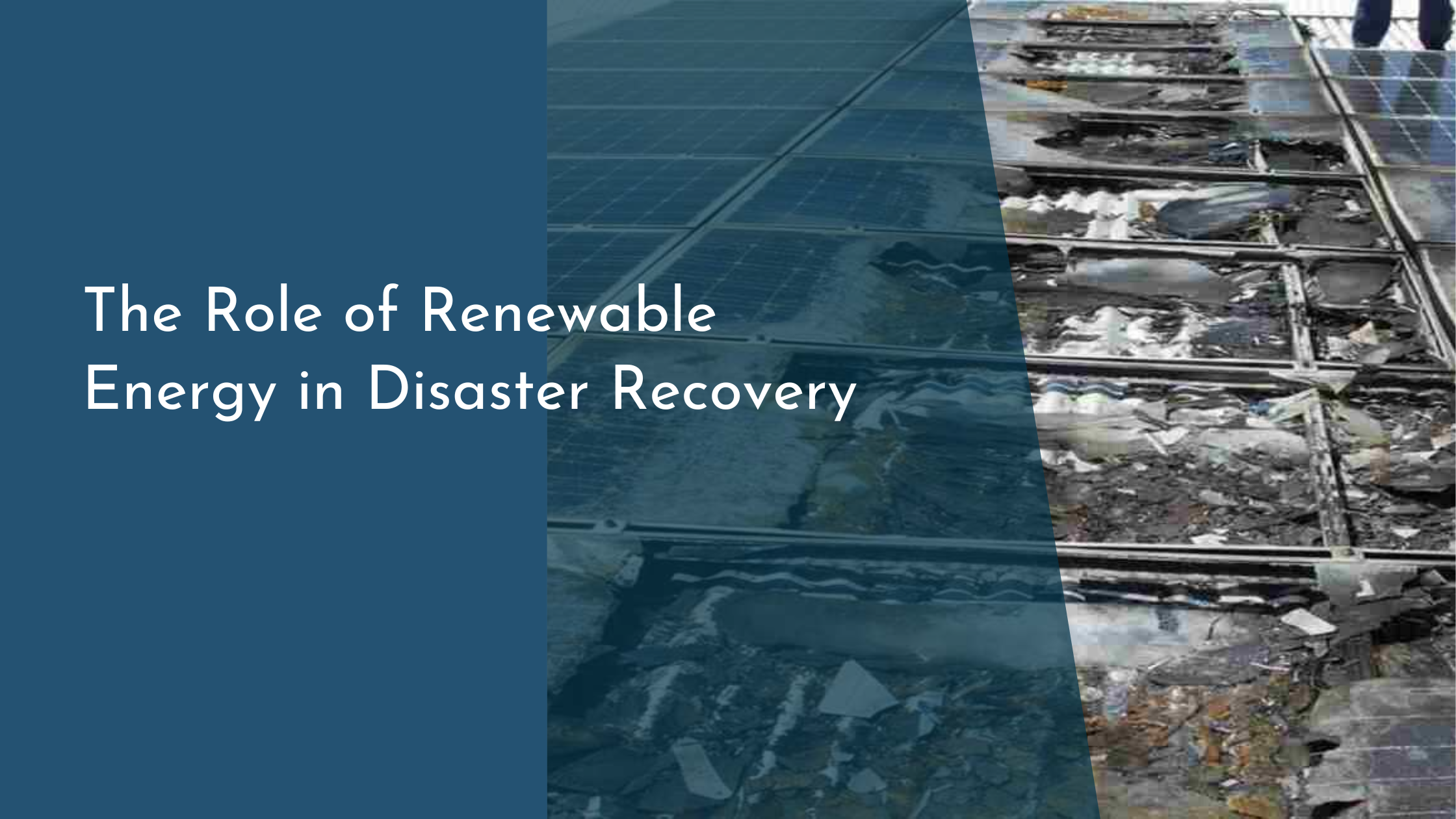The Role of Renewable Energy in Disaster Recovery
In the face of increasingly frequent and severe natural disasters, the role of renewable energy in disaster recovery has become more pivotal than ever. As communities worldwide grapple with the aftermath of hurricanes, earthquakes, wildfires, and floods, the need for resilient and sustainable energy solutions is clear. Renewable energy sources, such as solar, wind, hydro, and biomass, offer a beacon of hope in these challenging times. This article explores how renewable energy is transforming disaster recovery efforts, highlighting its advantages, innovative solutions, and the promising future it holds for communities around the globe.
Understanding Renewable Energy in Crisis Situations
Renewable energy in crisis situations is about leveraging natural resources to provide immediate and sustainable power solutions during and after emergencies. Unlike conventional energy sources that rely on centralized grids, renewables offer decentralized systems that can be deployed rapidly in affected areas. Solar panels, for instance, can be quickly installed in disaster-stricken zones to power essential services, such as hospitals and communication networks, ensuring continuity of critical operations. Moreover, wind turbines and micro-hydro systems can be set up in rural areas, providing a reliable power source when traditional infrastructure is compromised.
The flexibility and adaptability of renewable energy technologies make them ideal for crisis situations. Portable solar kits, for example, offer a lifeline to communities cut off from the grid, providing electricity for lighting, phone charging, and water purification. This not only enhances the resilience of affected communities but also enables a faster and more efficient response to disasters. By understanding and harnessing the potential of renewable energy in these scenarios, we can better equip ourselves to manage and mitigate the impacts of natural disasters.
Advantages of Renewables in Post-Disaster Scenarios
One of the most significant advantages of renewable energy in post-disaster scenarios is its sustainability. In the wake of a disaster, when conventional power sources may be unavailable or unreliable, renewables can provide a consistent and sustainable energy supply. This is crucial for maintaining essential services, such as healthcare and water supply, which are critical for recovery efforts. Additionally, renewable energy systems often have lower operational costs once established, offering economic relief to communities already burdened by disaster-related expenses.
Another key advantage is the environmental benefit. Traditional recovery efforts often rely on diesel generators, which can cause air and noise pollution and are dependent on a continuous fuel supply that might be scarce post-disaster. Renewable energy systems, however, harness natural, clean energy sources, reducing the carbon footprint and promoting environmental conservation. This not only aids in immediate recovery but also contributes to long-term environmental sustainability, paving the way for greener, more resilient communities.
Innovative Renewable Solutions for Recovery Efforts
Innovation in renewable energy technology is opening new avenues for disaster recovery. Mobile solar power units, for example, are now being deployed to provide electricity in remote disaster-hit regions. These units are compact, easy to transport, and can be set up quickly to power medical tents, communication hubs, and even small-scale desalination plants that provide clean drinking water. Such innovations are revolutionizing how we respond to and recover from natural disasters, ensuring that relief efforts are both effective and sustainable.
Moreover, community-based microgrids powered by renewables are gaining traction as a recovery solution. These microgrids can be established to operate independently from the main power grid, providing energy security and resilience against future disruptions. In addition, they foster community engagement and ownership, empowering local populations to be part of the recovery and rebuilding process. These innovative solutions showcase the transformative potential of renewable energy in disaster recovery, offering practical, efficient, and sustainable power alternatives.
A Bright Future: Renewables Leading the Way Forward
As we look to the future, the role of renewable energy in disaster recovery is set to expand. With technological advancements and decreasing costs, renewable energy systems are becoming more accessible and viable for communities worldwide. Governments and organizations are increasingly recognizing the need to integrate these systems into disaster preparedness and recovery plans, ensuring that communities are better equipped to handle future crises. This proactive approach not only enhances resilience but also promotes sustainable development, aligning with global efforts to combat climate change.
In conclusion, the future looks promising for renewables in disaster recovery. By embracing clean energy solutions, we can build stronger, more resilient communities that are prepared to face the challenges of a changing climate. As we continue to innovate and invest in renewable technologies, the path forward is clear: a transition towards sustainable energy sources that not only support disaster recovery but also foster a brighter, more sustainable future for all.
The integration of renewable energy into disaster recovery efforts marks a significant stride towards resilience and sustainability. By harnessing the power of nature, we can provide reliable and eco-friendly energy solutions that not only aid in immediate recovery but also pave the way for a sustainable future. As we move forward, the role of renewables will undoubtedly grow, offering hope and stability to communities worldwide. The journey towards a greener, more resilient world is well underway, and renewable energy is leading the charge.

